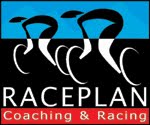I began my off season about three weeks ago and started running and swimming. OUCH! I had forgotten how much these "other" sports hurt when you haven't done them in a while. But, after two weeks, the pains started going away and I actually started feeling good. Last Sunday's hour + 45min run marked the first time I ran for more than a hour in 7 years! And despite some tenderness in my knees and ankles, I'm feeling pretty good.
For some of you it's still too early to begin talking about the off season. For other, like yours truly who's been racing since October 2005, it's definitely time to start thinking about off season activities. Ahhhhh, the joy of trying out new things, like chocolate cake!
Truth is, August is kind of a funny month. Most athletes, pro and non-pro, go through a bit of a lull during this month. The big question in every athlete's mind: am I feeling tired because training and racing is catching up with me OR do I need to train more/harder?
The answer, like most questions of this caliber, is a bit tricky. While I like to avoid giving a general answer to every athlete, if you've been following a rather "normal" training program for the past 6-8 months, then it's time for you to take a bit of mid-season breather. Taking 4-7 days completely off the bike and tending to things you've neglected such as working on the house, catching up with friends and family, paying your taxes from last year, etc. is good for you and everyone around you.
Taking a few days off the bike will help you physically and mentally. Don't worry, you've built plenty of fitness to where you won't lose momentum. But, care must be taken to plan for your time off AND your return to training. Choose the wrong time or come back to fast too early and you can risk injury and/or a drop in your fitness. This is especially true if your racing season is not yet over.
- A typical calendar for one of my athletes includes a rather sizeable build-up in training and racing intensity leading up to the first week in August, which includes new high levels of intensity (as in going hard) and duration (as in actual minutes on the bike during training and racing).
- Immediately after the final day of the intensity (race day or hard training), we do an easy 30-60 spin keeping it in the small chain ring, staying light on the pedals and keeping heart rate below 115-120. This easy ride will help flush out a lot of residue build-up in your body and aids recovery.
- Then it's 4-7 days completely off the bike. As a matter of fact, this is a great time to take your bike in to the shop for some mid-season overhaul action. The point is to not even look at your bike and avoid all temptation to ride. You can still do other physical activities BUT, and this is important, keep it light, keep it fun and use moderation. What ever you do (running, roller blading, surfing, hiking, Yoga, hacky sack, yard work, etc.) expect to be sore. Soreness is not caused by lack of fitness, rather it's caused by specificity of fitness caused by hours of cycling. In other words, you are fit for the stress of cycling but you are not fit for other sports or activities. As coaches, this is what we're looking for.
- Coming back to training must be planned out carefully. I usually start the first week with the 2 on, one off, three on, one off program: two days of training followed by a rest day, three days of training followed by a rest day. Intensity is usually kept at or below endurance level and duration is no longer than 180 minutes for the longest training session. The athlete can expect to feel lethargic and sore during this week, which is perfectly normal.
- The second week, depending on how well the athlete followed her program (i.e. didn't go hammering with anyone and stayed true to her program), builds by 10-15% in volume and perhaps intensity. This depends on the athlete's late season racing goals. If there are races coming up, we focus on proactively building intensity. If there are no major races coming up, then we can take our time with building intensity. By the middle to end of the second week, the athlete is feeling super charged, rested and feeling really good on the bike.
As summary, it's perfectly normal to be feeling a bit of lethargy this time of year and taking some time off is perfectly normal. Plan on taking a few days completely off the bike after a big race and/or training week. Allow yourself one day of recovery spin to help flush out your body then being taking time off. Stay active but don't over do it. Come back slowly and methodically. Seek the advice of your coach!
Be Fast,
Kam
| ||||||||||||||
| ||||||||||||||
====================================
National Director of Collegiate Cycling
USA Cycling
====================================
Founder
Del Mar Criterium Series
====================================
Manager, Team Beat Cancer
====================================



